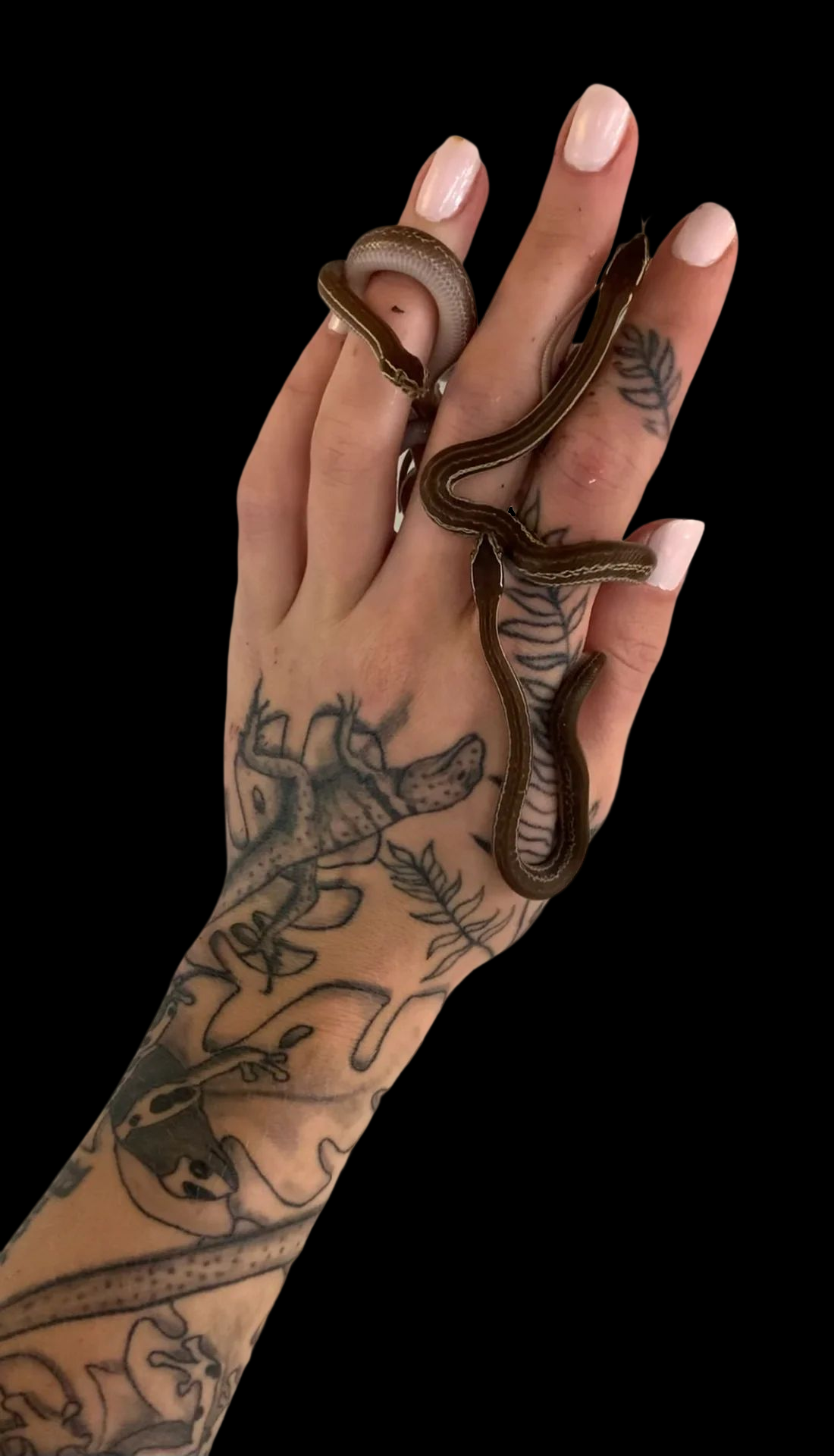Photo Disclaimer
Description
African House Snake (Normal)
Scientific Name: Boaedon capensis
Common Name: African House Snake
Species Overview
Size: Adult African House Snakes typically reach 2.5–4 feet (0.75–1.2 m) in length, with females often growing larger and more robust than males. They are slender, smooth-scaled constrictors with a graceful build and bright, alert eyes.
Appearance: The Normal African House Snake displays the classic appearance of the species, featuring shades that range from light to dark brown, sometimes with olive or reddish undertones depending on locality. A subtle stripe often extends from the snout through the eye toward the back of the head, and faint patterning or side speckling may occur along the body. The belly is cream to off-white, sometimes lightly flecked with brown. This natural, variable appearance makes each individual unique, and the overall sheen of the smooth scales gives the snake a polished, elegant look.
Distribution: Widespread throughout sub-Saharan Africa, including South Africa, Namibia, Botswana, Zimbabwe, Kenya, and Tanzania. The species is highly adaptable, thriving in a variety of habitats across the continent.
Habitat: In the wild, African House Snakes inhabit grasslands, woodlands, and rural settlements, where they frequently take up residence near human dwellings to hunt rodents. In captivity, they thrive in moderately humid terrestrial enclosures with soft substrate for burrowing and multiple hides for security.
Behaviour: Intelligent, calm, and easy to care for, African House Snakes are known for their gentle temperament and strong feeding response. They are among the most beginner-friendly snakes in the reptile hobby and adjust well to regular handling and routine care.
Captive Care
Enclosure: Provide an adult enclosure measuring at least 3 feet × 18 inches × 18 inches, though larger enclosures are always appreciated. Use soft substrate such as coconut husk, soil blend, or aspen to allow for limited burrowing. Include at least two hides—one on the warm side and one on the cool side—and light climbing décor or branches.
Temperature & Humidity: Maintain a daytime gradient of 78–86°F (25–30°C) with a basking spot near 88–90°F (31–32°C). Allow nighttime temperatures to drop to 70–74°F (21–23°C). Keep humidity between 40–60%, allowing slight increases during shedding.
Diet: Offer thawed rodents proportional to the snake’s girth—juveniles every 5–7 days and adults every 10–14 days. African House Snakes are dependable feeders and adapt easily to frozen-thawed prey.
Behaviour in Captivity: Docile and inquisitive, African House Snakes settle quickly into captivity. They are primarily nocturnal but may be active during the evening hours, especially after feeding. With consistent care, they become confident and easy to handle.
Special Considerations: These snakes are strong and curious for their size, so ensure all enclosure lids are secure. Their adaptability and hardy nature make them excellent choices for both beginner and experienced keepers.
Taxonomy Note
This species was formerly classified under the genus Lamprophis and has since been reassigned following detailed genetic and phylogenetic studies.
Former Classification: Lamprophis capensis
Current Accepted Name: Boaedon capensis
This change separates southern African Lamprophis species from the genetically distinct Boaedon lineage, which includes a wide range of African “House Snakes.” Boaedon capensis is now the accepted and valid scientific name across both research and herpetocultural communities.
Genetics Note
The Normal African House Snake represents the wild-type form of Boaedon capensis and serves as the foundation for all selectively bred morphs such as Albino, T+ Albino, Hypo, and Red. While not a morph itself, this natural form shows notable variation in tone and pattern across its broad range, reflecting the adaptability and diversity of the species.

